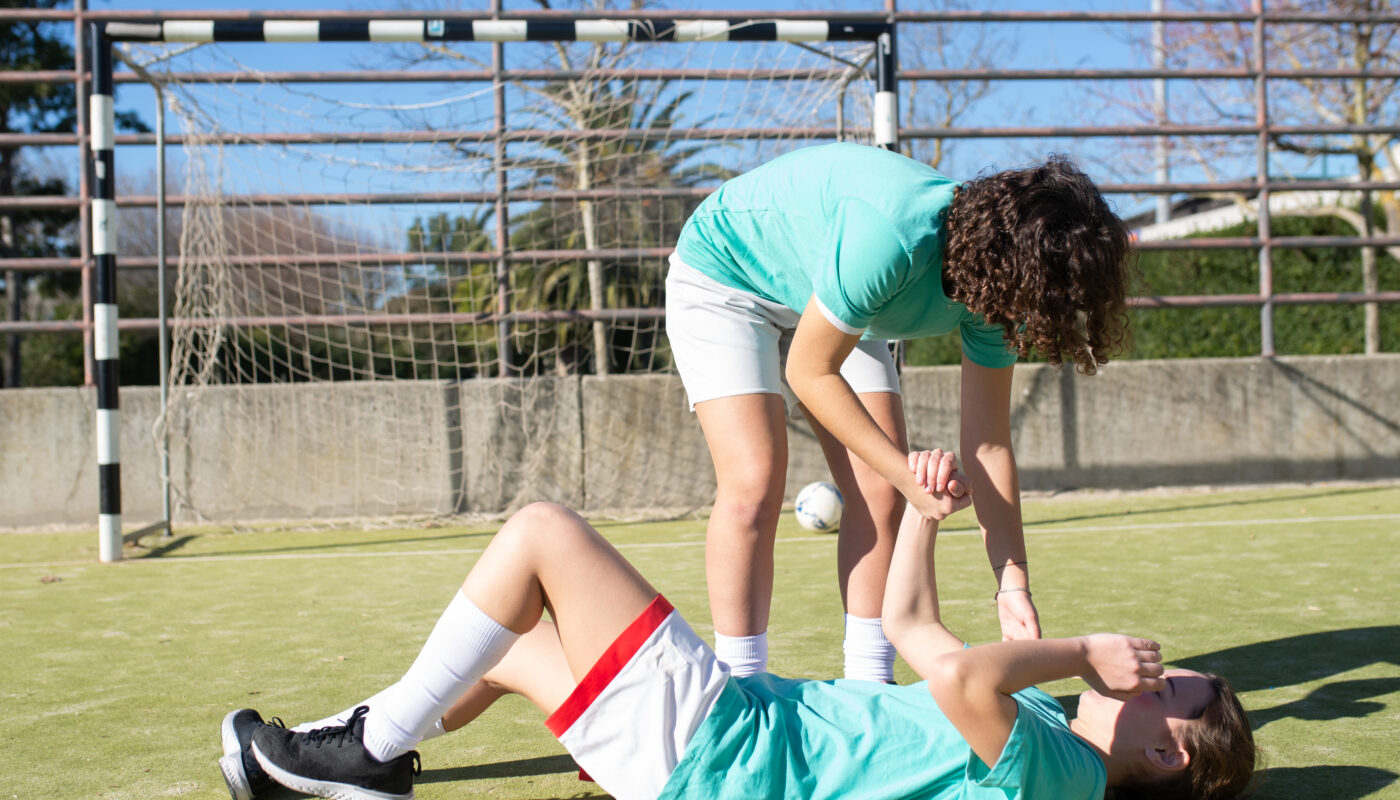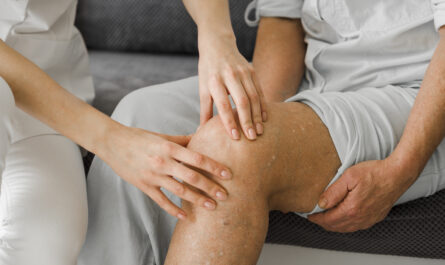Football training is rigorous, demanding both physical and mental endurance. Players push their bodies to the limit, often running, jumping, and tackling at high intensities. However, one common obstacle that can disrupt even the most disciplined athletes is muscle cramping. These sudden, painful contractions can hinder performance and even lead to injuries if not addressed properly. Fortunately, understanding the causes of cramps and implementing effective prevention strategies can help football players maintain peak performance. This article explores the science behind cramps, why they occur during football training, and actionable steps to avoid them.
What Are Muscle Cramps?
Muscle cramps are involuntary and often painful contractions of one or more muscles. They can occur during physical activity, especially in high-intensity sports like football, and are commonly experienced in the calves, hamstrings, and quadriceps. While cramps are typically harmless, their sudden onset can impair athletic performance and disrupt training sessions.
Why Do Cramps Occur During Football Training?
Several factors contribute to muscle cramping during football training:
1. Dehydration
Football involves continuous movement, often under extreme weather conditions. Sweating during training leads to fluid loss, and if players fail to rehydrate adequately, dehydration can cause muscle contractions to become uncoordinated, leading to cramps.
2. Electrolyte Imbalance
Muscle function depends on electrolytes, which include calcium, magnesium, potassium, and sodium. When these minerals are depleted through sweat, the muscles become prone to cramping.
3. Muscle Fatigue
Intense training sessions push muscles to their limits. Overuse or insufficient recovery can lead to fatigue, disrupting the muscle’s ability to contract and relax properly.
4. Inadequate Warm-Up
Failing to prepare the body with a proper warm-up routine can result in stiff muscles, increasing the likelihood of cramps during training.
5. Poor Nutrition
A diet lacking essential nutrients like carbohydrates, proteins, and fats can deprive muscles of the energy they need to function optimally.
How to Avoid Cramps During Football Training
Preventing cramps requires a combination of physical preparation, proper hydration, balanced nutrition, and attention to technique. Here are the key strategies to avoid cramps:
1. Stay Hydrated
Hydration is crucial for preventing cramps. Here’s how to make sure you drink enough water:
- Before Training: Drink 16–20 ounces of water two hours before training.
- During Training: Sip water or an electrolyte drink every 15–20 minutes.
- After Training: Replenish lost fluids by drinking water or a recovery beverage.
Monitor the color of your urine as a quick hydration check; pale yellow indicates proper hydration, while darker shades suggest dehydration.
2. Replenish Electrolytes
Electrolyte balance is key to muscle function. Consume foods high in electrolytes, such as:
- Potassium: Bananas, oranges, and sweet potatoes.
- Magnesium: Nuts, seeds, and leafy greens.
- Calcium: dairy products, enriched plant-based milks, and tofu.
- Sodium: Sports drinks or lightly salted snacks, especially during long training sessions.
For high-intensity or extended sessions, consider electrolyte supplements to restore mineral levels effectively.
3. Warm-Up Thoroughly
A proper warm-up prepares muscles for the demands of training. Follow these steps:
- Dynamic Stretching: Perform stretches that mimic football movements, such as leg swings, lunges, and high knees.
- Light Cardio: Engage in 5–10 minutes of jogging to increase blood flow to muscles.
- Sport-Specific Drills: Practice slow, controlled movements that are part of your routine, like passing or dribbling drills.
4. Build Muscle Endurance
Strong and conditioned muscles are less likely to cramp. Incorporate strength training and endurance exercises into your routine:
- Weight Training: Focus on exercises that strengthen the calves, hamstrings, and quadriceps, such as squats, lunges, and leg presses.
- Core Stability: Include planks, Russian twists, and dead bugs to stabilize the core muscles, which play a key role in overall performance.
- Aerobic Conditioning: Engage in activities like running or cycling to improve cardiovascular endurance and delay muscle fatigue.
5. Practice Proper Nutrition
Fueling your body with the right nutrients supports muscle health:
- Carbohydrates: Provide energy for training; include whole grains, fruits, and vegetables in your diet.
- Protein: Aids in muscle repair and growth; incorporate lean meats, fish, eggs, and plant-based options like beans and lentils.
- Healthy Fats: Support long-term energy needs; opt for avocados, nuts, and olive oil.
6. Gradual Progression in Training
Avoid sudden increases in training intensity or duration. Gradual progression allows your muscles to adapt and reduces the risk of overuse. Follow the “10% Rule” by increasing training intensity or volume by no more than 10% per week.
7. Massage and Foam Rolling
Self-massage or foam rolling before and after training helps release muscle tension and improve circulation. Target areas prone to cramping, such as the calves and thighs, for 5–10 minutes.
8. Proper Rest and Recovery
It’s crucial to give your body enough time to heal:
- Sleep: Aim for 7–9 hours per night to promote muscle repair.
- Rest Days: In order to avoid overtraining, plan at least one day off per week.
- Active Recovery: Engage in low-impact activities like walking or swimming on rest days to enhance blood flow.
What to Do If Cramps Occur During Training
Despite preventive measures, cramps can still happen. Here’s how to manage them effectively:
1. Stop and Stretch
Stop the activity that is causing the cramp right away, then gently stretch the afflicted muscle. For example, if the cramp is in your calf, perform a calf stretch by leaning against a wall and extending the cramped leg behind you.
2. Massage the Muscle
Gently massage the cramping muscle to help it relax and improve blood flow. Use your hands or a foam roller for deeper pressure.
3. Apply Heat or Ice
- Heat: Use a warm compress to relax tight muscles.
- Ice: Apply an ice pack if the cramp is accompanied by swelling or soreness.
4. Rehydrate and Replenish Electrolytes
Drink water or an electrolyte-rich beverage to restore fluid and mineral balance.
When to Seek Medical Advice
While most cramps are harmless, persistent or severe cramps may indicate an underlying issue. Consult a healthcare professional if:
- Cramps occur frequently and without apparent cause.
- They are accompanied by swelling, redness, or numbness.
- You experience cramps despite proper hydration and nutrition.
Conclusion
Muscle cramps during football training can be disruptive and painful, but they are largely preventable with the right strategies. By staying hydrated, maintaining a balanced diet, warming up properly, and building muscle endurance, football players can significantly reduce their risk of cramping. Additionally, gradual training progression and proper recovery practices ensure that muscles remain strong and resilient.
If cramps do occur, taking immediate action with stretching, massage, and rehydration can provide relief. For chronic or unexplained cramps, seeking medical advice is essential. With careful preparation and consistent effort, football players can minimize the impact of cramps and stay focused on achieving their athletic goals.



